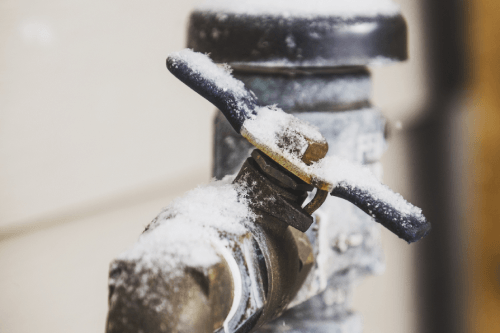Avoid Frozen Plumbing in Cold Weather: Pro Strategies
Avoid Frozen Plumbing in Cold Weather: Pro Strategies
Blog Article
Are you hunting for related information involving How to Prevent Your Pipes From Freezing?

Winter can damage your pipes, especially by freezing pipes. Right here's how to avoid it from happening and what to do if it does.
Introduction
As temperature levels decrease, the danger of frozen pipelines rises, possibly causing expensive repairs and water damages. Recognizing just how to avoid frozen pipelines is important for property owners in cool environments.
Understanding Icy Pipes
What creates pipes to ice up?
Pipes freeze when revealed to temperatures listed below 32 ° F (0 ° C) for extended durations. As water inside the pipelines freezes, it increases, taxing the pipe wall surfaces and possibly creating them to rupture.
Threats and problems
Frozen pipes can bring about water interruptions, home damage, and costly repair services. Ruptured pipelines can flooding homes and cause comprehensive structural damages.
Signs of Frozen Pipeline
Determining frozen pipes early can avoid them from rupturing.
Exactly how to determine frozen pipes
Look for decreased water flow from taps, uncommon smells or noises from pipes, and visible frost on revealed pipelines.
Prevention Tips
Insulating vulnerable pipes
Wrap pipes in insulation sleeves or make use of warmth tape to secure them from freezing temperatures. Concentrate on pipes in unheated or exterior areas of the home.
Heating methods
Maintain interior areas properly heated, specifically areas with plumbing. Open up cupboard doors to allow cozy air to distribute around pipes under sinks.
Securing Outdoor Pipes
Garden pipes and exterior taps
Disconnect and drain garden hose pipes before winter months. Mount frost-proof spigots or cover outdoor faucets with insulated caps.
What to Do If Your Pipelines Freeze
Immediate actions to take
If you suspect icy pipelines, keep taps available to alleviate stress as the ice melts. Make use of a hairdryer or towels taken in warm water to thaw pipes gradually.
Long-Term Solutions
Structural changes
Think about rerouting pipelines away from outside wall surfaces or unheated areas. Add extra insulation to attics, basements, and crawl spaces.
Upgrading insulation
Invest in top quality insulation for pipes, attics, and walls. Correct insulation aids preserve regular temperature levels and lowers the risk of icy pipelines.
Conclusion
Protecting against icy pipes calls for aggressive procedures and quick reactions. By understanding the reasons, indicators, and preventive measures, home owners can shield their pipes during winter.
5 Ways to Prevent Frozen Pipes
Drain Outdoor Faucets and Disconnect Hoses
First, close the shut-off valve that controls the flow of water in the pipe to your outdoor faucet. Then, head outside to disconnect and drain your hose and open the outdoor faucet to allow the water to completely drain out of the line. Turn off the faucet when done. Finally, head back to the shut-off valve and drain the remaining water inside the pipe into a bucket or container. Additionally, if you have a home irrigation system, you should consider hiring an expert to clear the system of water each year.
Insulate Pipes
One of the best and most cost-effective methods for preventing frozen water pipes is to wrap your pipes with insulation. This is especially important for areas in your home that aren’t exposed to heat, such as an attic. We suggest using foam sleeves, which can typically be found at your local hardware store.
Keep Heat Running at 65
Your pipes are located inside your walls, and the temperature there is much colder than the rest of the house. To prevent your pipes from freezing, The Insurance Information Institute suggests that you keep your home heated to at least 65 degrees, even when traveling. You may want to invest in smart devices that can keep an eye on the temperature in your home while you’re away.
Leave Water Dripping
Moving water — even a small trickle — can prevent ice from forming inside your pipes. When freezing temps are imminent, start a drip of water from all faucets that serve exposed pipes. Leaving a few faucets running will also help relieve pressure inside the pipes and help prevent a rupture if the water inside freezes.
Open Cupboard Doors
Warm your kitchen and bathroom pipes by opening cupboards and vanities. You should also leave your interior doors ajar to help warm air circulate evenly throughout your home.

I was made aware of that article about Winter Plumbing Precautions: Preventing Frozen Pipes through an acquaintance on another website. Are you aware of anybody else who is excited about the subject? Feel free to promote it. I love your readership.
Call Today Report this page